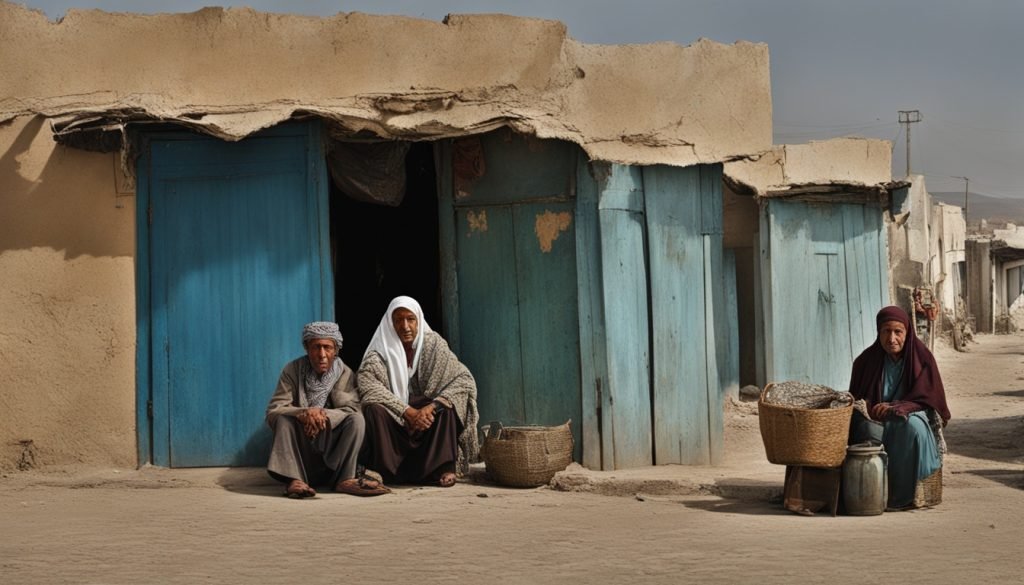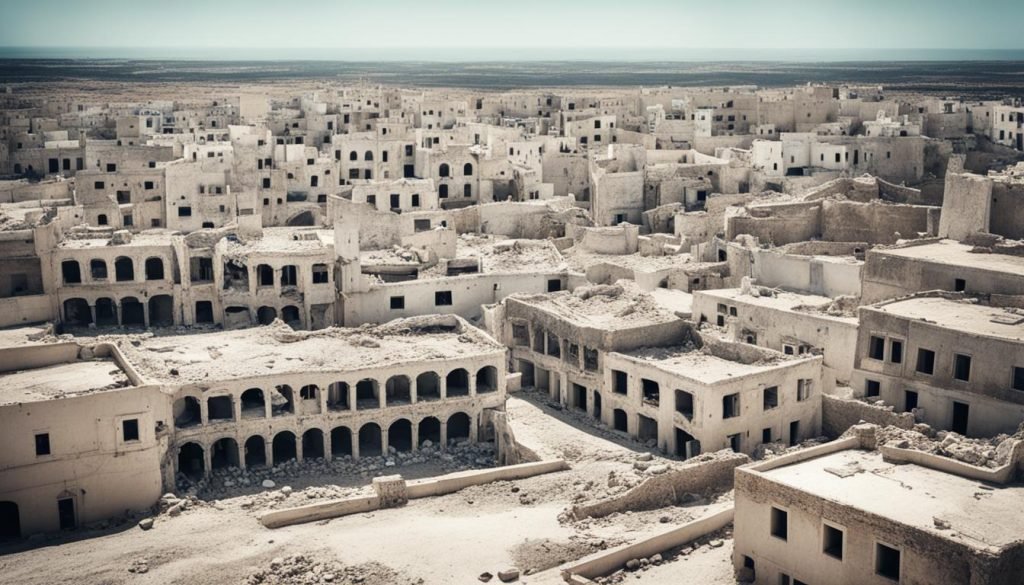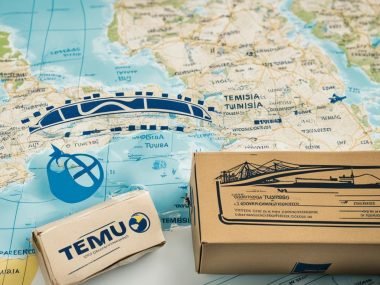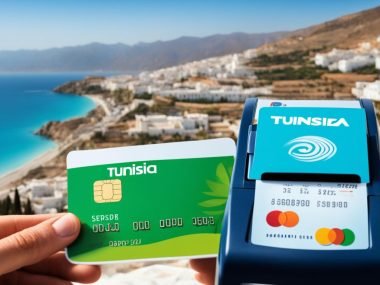Have you ever wondered just how severe the economic hardships in Tunisia truly are?
We’re looking into Tunisia’s poverty to understand it better. We use national stats, household data, and global numbers for this. These details help us see how people live in Tunisia today. And we want to show what affects life quality there.
Key Takeaways
- Understanding the intricate nature of poverty in Tunisia.
- Analysing national statistics and household surveys for a holistic economic assessment.
- Investigating historical trends and recent data influencing Tunisian living conditions.
- Exploring the impact of international metrics on Tunisia’s economic landscape.
- Highlighting the interconnected factors affecting the standard of living in Tunisia.
Overview of Poverty in Tunisia
In Tunisia, we look closely at poverty through lots of numbers and history. We find out why people struggle, especially with world changes lately.
Historical Poverty Data
Tunisia’s poverty levels have changed a lot over time. From 2010 to 2015, fewer people were poor. This was due to government help and special programmes.
Recent Trends and Statistics
But, the COVID-19 pandemic made things worse recently. A 2021 survey found more people are now poor. This shows why we need to help folks more than ever.
| Year | National Poverty Rate | Significant Events |
|---|---|---|
| 2010 | 20.5% | Post-Revolution Economic Challenges |
| 2015 | 15.2% | Government Reforms and Social Programmes |
| 2021 | 16.6% | Impact of COVID-19 Pandemic |
Economic Conditions in Tunisia
In the last ten years, Tunisia’s economy changed a lot. It grew a bit before, but recent problems have made things tough. We looked into how Tunisia’s economy grew and how COVID-19 affected it.
GDP Growth Rates
From 2010 to 2015, Tunisia’s economy grew a little every year, by 0.51 percent. This growth came from making things and tourism. But this growth wasn’t strong due to some big problems in the economy.
Impact of the COVID-19 Pandemic
COVID-19 hit Tunisia hard, slowing down the economy quickly. It stopped a lot of products from being made and people bought less. This made the economy shrink, poverty went up, and things got harder for people.
To show you what we mean, let’s look at how the economy did before and during COVID-19:
| Period | Annual GDP Growth Rate |
|---|---|
| 2010-2015 | 0.51% |
| 2020-2021 | -2.55% |
This shows how much Tunisia’s economy went up and down because of COVID-19. Fixing these issues is important for getting back on track and making the economy strong again.
Poverty Rates in Tunisia
Looking at Tunisia’s poverty, we study both national and world standards. These numbers show a detailed picture of poverty there.
National Poverty Line Statistics
In 2021, 16.6 percent of Tunisians lived in poverty. This is based on national standards. This view shows the economic challenges many face. The poverty line includes income, spending, and costs of living in a household. These details help track progress and shape policies to better lives.

International Poverty Lines
Tunisia’s poverty rate matches closely with global levels using international standards. These standards use different income levels to compare countries. This helps guide Tunisia in meeting world aims to reduce poverty.
| Year | National Poverty Line | International Poverty Line (USD 1.90/day) | International Poverty Line (USD 3.20/day) |
|---|---|---|---|
| 2010 | 20.5% | 3.2% | 15.2% |
| 2015 | 15.2% | 2.8% | 12.8% |
| 2021 | 16.6% | 3.5% | 14.3% |
Linking national and global stats gives a full view of poverty’s effects. It helps in building plans to fight poverty in Tunisia and beyond.
Income Inequality in Tunisia
Income inequality in Tunisia is a big problem. It affects both the social and economic sides. By looking at different facts, we can see the unfair income differences. We can also find ways to make things better.
Gini Index Analysis
The Gini index tells us about income inequality. In 2015, Tunisia’s Gini index was 32.8. A low Gini index means income is shared more fairly among people.
We have looked at the Gini index over the years:
| Year | Gini Index Value |
|---|---|
| 2010 | 33.5 |
| 2015 | 32.8 |
| 2020 | 34.2 |
Shared Prosperity Measures
The Shared Prosperity Premium is another important check. It looks at the income growth of the poorest 40 percent. From 2010 to 2015, it was 1.97 in Tunisia. This means their income grew faster than the average.
Looking at income inequality this way shows we need better policies. Fair economic growth helps everyone. It cuts down income inequality and helps everyone do better.
Living Standards in Tunisia
To really get the picture of life in Tunisia, we need to look at two key parts. The access to basic stuff like clean water and schools. These things make life better for people.
Access to Basic Services
Not everyone in Tunisia can easily get clean water or use good toilets. This is especially tough for people living away from big cities. Making sure everyone has these basics can make a big difference in health and happiness.
Educational Opportunities
In Tunisia, learning chances aren’t the same for everyone. Some places have great schools, while others don’t. Boosting education helps fight poverty and grow the economy. By focusing on schools, Tunisia can give its young people a brighter future.
Socioeconomic Challenges in Tunisia
Tunisia is improving in many areas. But big challenges remain in both cities and countryside parts. We’ll look at unemployment and problems in rural places here.

Unemployment Rates
Unemployment is a big problem in Tunisia. The jobless rate is about 16-18% because of COVID-19 and a slow economy. It’s different in various places and worse for young people and women. This high unemployment stops economic growth.
Challenges in Rural Areas
Rural poverty is also a big issue. The countryside suffers more poverty than cities. This is due to less infrastructure, not so many services, and fewer learning chances. These problems make the poverty cycle continue, affecting rural people’s lives. Better infrastructure and services are needed to fix these inequalities.
Development Initiatives in Tunisia
Development tasks in Tunisia are key for fighting poverty and spurring growth. The work includes efforts from the government and outside help. Both are very important.
Government Programs
The Tunisian government has started several plans to better its citizens’ lives. Main projects are:
- Programme National d’aides aux familles démunies (National Programme for Assistance to Needy Families): It gives money help to very poor families.
- Initiatives for Urban and Regional Development: They make infrastructure better, improve education, and grow the economy in poor places.
These plans by the government help with immediate needs and make changes for lasting growth.
International Aid and Cooperation
Outside aid and teamwork are vital in Tunisia’s plan for growth. Working with global groups has brought valuable support:
| International Organisation | Type of Aid | Impact |
|---|---|---|
| World Bank | Financial Assistance | Funds big infrastructure projects and economic changes |
| European Union | Grants and Technical Support | Strengthens local leaders and community groups |
| UNICEF | Healthcare and Education Programmes | Helps kids stay healthy and go to school |
Working with global partners has really helped Tunisia. This teamwork supports Tunisian efforts to make lives better.
Unemployment in Tunisia
Unemployment in Tunisia is a big worry. It affects our whole economy. We need to act fast to help.
Current Unemployment Statistics
Tunisia’s unemployment rate is still high. We need plans to fix this problem. Job market changes are making it hard to find work. We must look at unemployment trends closely to grow our economy.
Sectors Affected the Most
Some job areas in Tunisia are really struggling. Farming jobs are going down. This is partly because of weather changes and new tech.
Factory work is also suffering. World markets and our policies are the cause. We need to help these areas bounce back to lower unemployment.
Effect of Foreign Aid to Tunisia
Foreign aid helps Tunisia fight poverty and grow economically. The country gets financial help, grants, and support for its projects. This help is key for Tunisia to reduce poverty and make life better for its people.
Types of Aid Received
Tunisia gets different kinds of aid. Countries like France and Germany give bilateral aid. Groups like the World Bank and the International Monetary Fund give multilateral aid. NGOs also help a lot with humanitarian aid and development work. This mix of support helps Tunisia in many ways, both now and for the future.
Impact on Poverty Alleviation
Foreign aid has a big impact on reducing poverty in Tunisia. It has made it possible to start many development projects, especially in the countryside. Projects that help build up local groups make governance and managing resources better. These efforts have made living conditions better and reduced poverty. This shows how foreign aid is really helping Tunisia reach its goals.
FAQ
How poor is Tunisia?
What are the historical poverty data points in Tunisia?
What recent trends and statistics reflect poverty in Tunisia?
How have the economic conditions in Tunisia been impacted recently?
What are the GDP growth rates in Tunisia?
How has COVID-19 impacted Tunisia’s economy?
What are the poverty rates in Tunisia under national and international poverty lines?
How is income inequality measured in Tunisia?
What is the Gini index in Tunisia?
How are living standards in Tunisia assessed?
What socioeconomic challenges does Tunisia face?
What development initiatives are in place in Tunisia?
What are the current unemployment statistics in Tunisia?
How does foreign aid impact poverty alleviation in Tunisia?
Source Links
- https://databankfiles.worldbank.org/public/ddpext_download/poverty/987B9C90-CB9F-4D93-AE8C-750588BF00QA/current/Global_POVEQ_TUN.pdf
- https://databankfiles.worldbank.org/public/ddpext_download/poverty/33EF03BB-9722-4AE2-ABC7-AA2972D68AFE/Global_POVEQ_TUN.pdf
- https://inkyfada.com/en/2021/09/23/tunisia-poverty-map/







